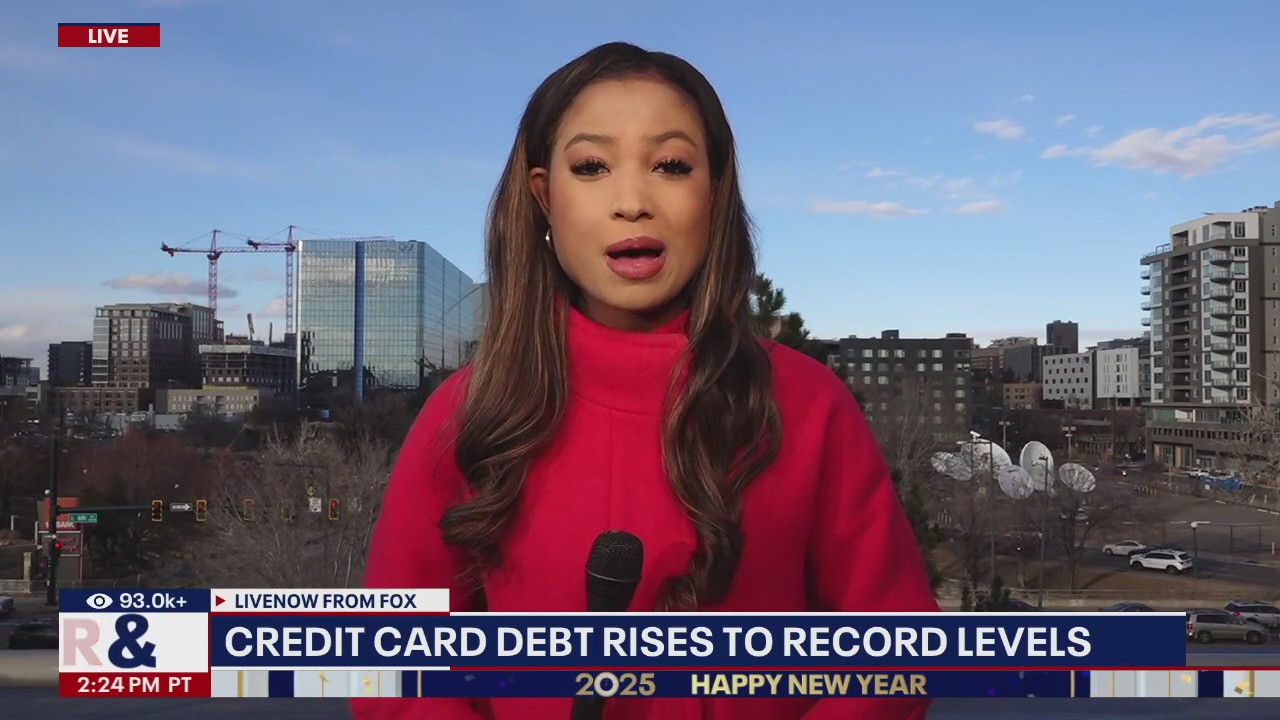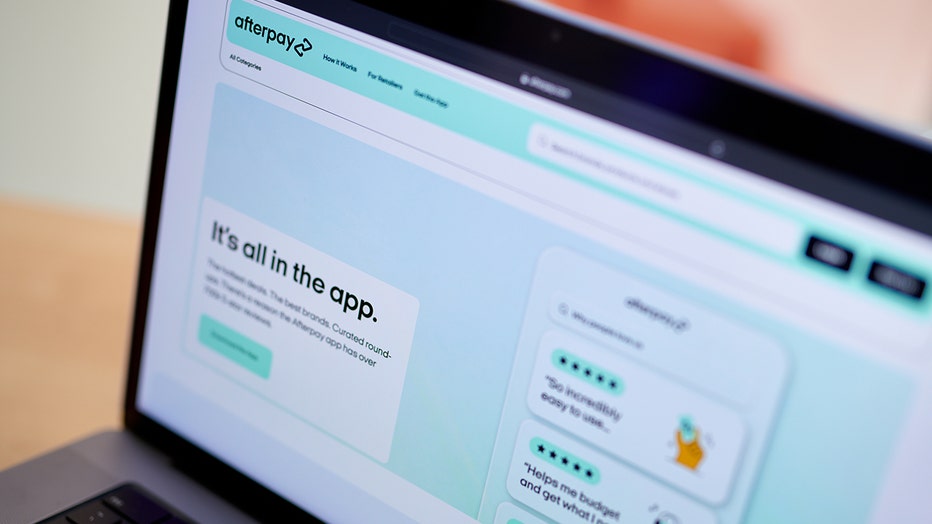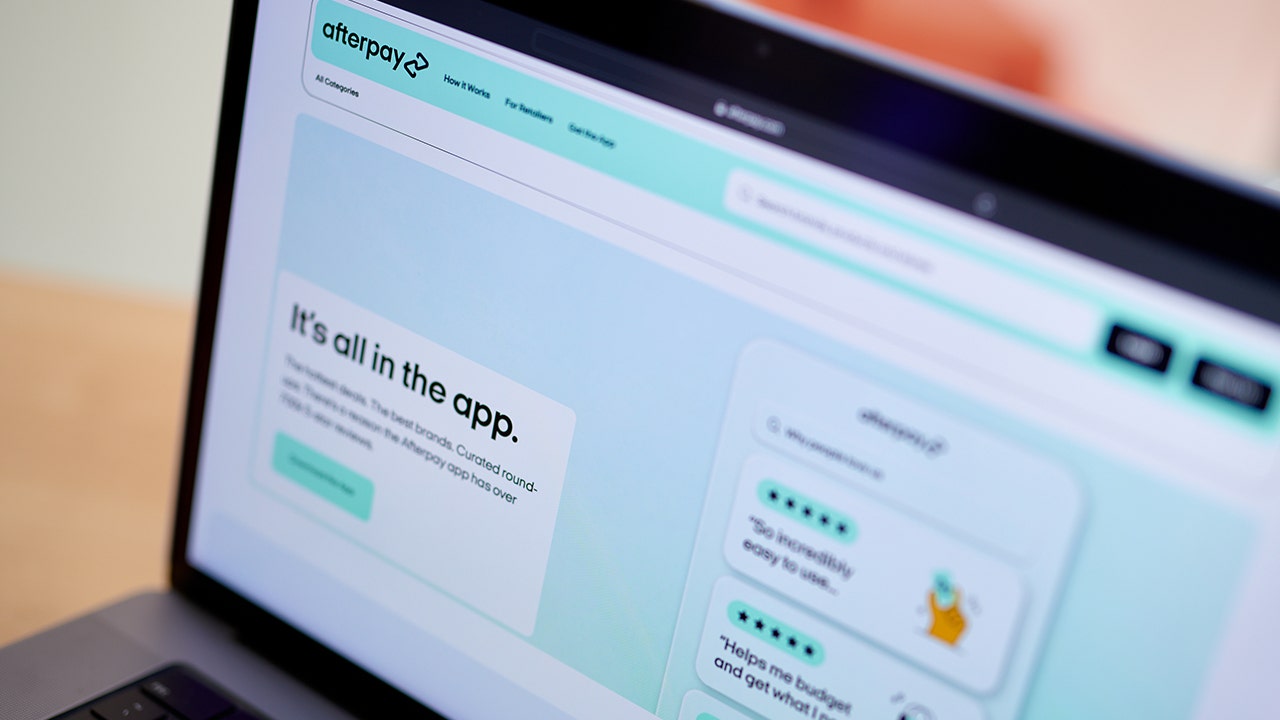
FICO announced on Monday that it is going to start incorporating buy now, pay later (BNPL) data into credit scores.
The news comes as the payment method surges in popularity, with over 91 million Americans expected to use BNPL for purchases this year.
Buy now, pay later data incorporated into credit scores
The FICO Score 10 BNPL and FICO Score 10 T BNPL will be the first credit scores from a leading credit scoring provider to incorporate this data.
What they’re saying:
FICO said the scores represent a “significant advancement in credit scoring, accounting for the growing importance” of such loans in the U.S. credit ecosystem.
FICO said these scores will provide lenders with greater visibility into consumers’ repayment behaviors and will enable a more comprehensive view of their credit readiness.
“Buy Now, Pay Later loans are playing an increasingly important role in consumers’ financial lives,” Julie May, vice president of B2B Scores at FICO, said.

The AfterPay website on a laptop computer. (Credit: Gabby Jones/Bloomberg via Getty Images)
By expanding its FICO Score 10 Suite with these new models, May said the company is “enabling lenders to more accurately evaluate credit readiness, especially for consumers whose first credit experience is through BNPL products.”
“Our clients tell us that FICO’s initiative to include BNPL data in credit scoring is a progressive step that acknowledges the evolving landscape of consumer financing,” added May. “By capturing a broader view of consumer credit behavior, lenders believe they can make more informed decisions, ultimately benefiting both the industry and consumers.”
How BNPL data will affect credit scores
Dig deeper:
Initially, BNPL payments were not reported to credit bureaus, so they couldn’t lower or boost a person’s credit score.
However, this is changing.
FICO and BNPL provider Affirm released a study in February to analyze analyzed the impact of including BNPL loans in a consumer’s FICO score.
The study showed that the majority of consumers with five or more BNPL loans from Affirm would experience “higher scores or no score changes.”
RELATED: Buy now, pay later loans will now impact Americans’ credit scores
Meanwhile, critics say that BNPL leads to “phantom debt” that could hurt credit scores. Phantom debt is debt that is either nonexistent, already paid, or inflated, and is being pursued by debt collectors.
In May, the Federal Reserve reported that the use of BNPL loans edged up 1 percentage point to 15%, while the share of BNPL users paying late increased sharply. Nearly one-fourth of BNPL users were late making a payment, compared with 18% in the prior year.
BNPL company Affirm said earlier this year that it would begin reporting all of its short-term interest-free purchases to credit reporting agency Experian. But the loans were not set to immediately factor into consumers’ traditional credit scores.
What are buy now, pay later loans?
Big picture view:
According to Investopedia, BNPL is a type of short-term loan that lets shoppers pay for products in small installments spread over a set period of time.
These services are typically used for minor, although expensive purchases like smartphones or luxury clothing. However, these buy now, pay later financing options have become so popular in the current economic environment, that a growing number of consumers are even leveraging them to pay for necessities like food.
A small down payment, generally around 25% of the purchase amount, may be required at once and then you pay off the rest in the coming weeks.1 For example, if the purchase costs $1,000, you may have to pay $250 immediately during the checkout, then you can pay the remaining $750 in five $150 installments spread over five or 10 weeks.
Unlike other types of loans, BNPL loans are typically interest-free and rarely carry other service fees, making them suitable for people on a tight budget. However, this kind of convenience can come at a cost, as you may be tempted to buy more than they can actually afford. Interest is tacked on to certain plans, and consumers can get hit with a late fee if they don’t have adequate funds in their account to cover the payments.
BNPL loans surge in popularity
The backstory:
Lending services such as Afterpay, Klarna, Affirm and PayPal have risen to prominence as cash-strapped consumers looked to stretch their wallets as they contend with persisting inflation, high interest rates and student loan payments, which resumed in October 2023 after a pause due to the COVID-19 pandemic.
Data from an April LendingTree report shows that 25% of such users have used the service to buy groceries, up from 14% a year ago.
Many consumers use buy now, pay later (BNPL) services and are attracted to their ease of access. Still, they are at risk of becoming overextended, according to a recent Achieve survey.
How to manage BNPL debt
What you can do:
More than half (56%) of the respondents in the Achieve survey said that keeping track of multiple BNPL transactions takes a lot of work. Keeping a running list of all outstanding BNPL transactions is one way to get ahead of managing your debt.
Achieve also recommended that consumers note each transaction, the name of the BNPL provider, the number of payments remaining, the payment amount and how payments are made.
Consumers should also consider BNPL products like any other form of credit, spend within their limit and have a repayment plan in mind before they make large purchases. They should also opt for autopay to avoid late fees for missed payments.
“Whenever possible, pay from a checking account rather than a credit card to avoid incurring interest charges for these purchases later on, just make sure you always have enough money in your account to cover the monthly payment to avoid overdrafting,” Achieve said.
The Source: The information for this story was provided by a press release by FICO. FOX Business also contributed. This story was reported from Los Angeles.







